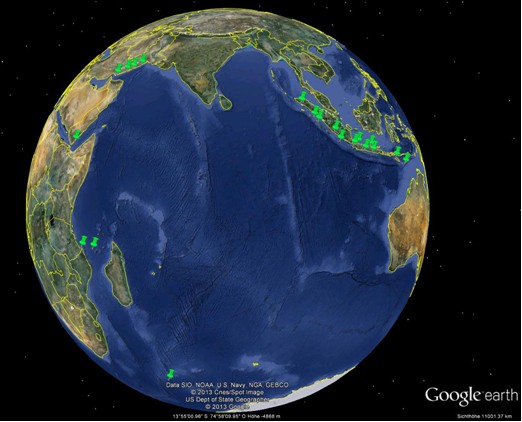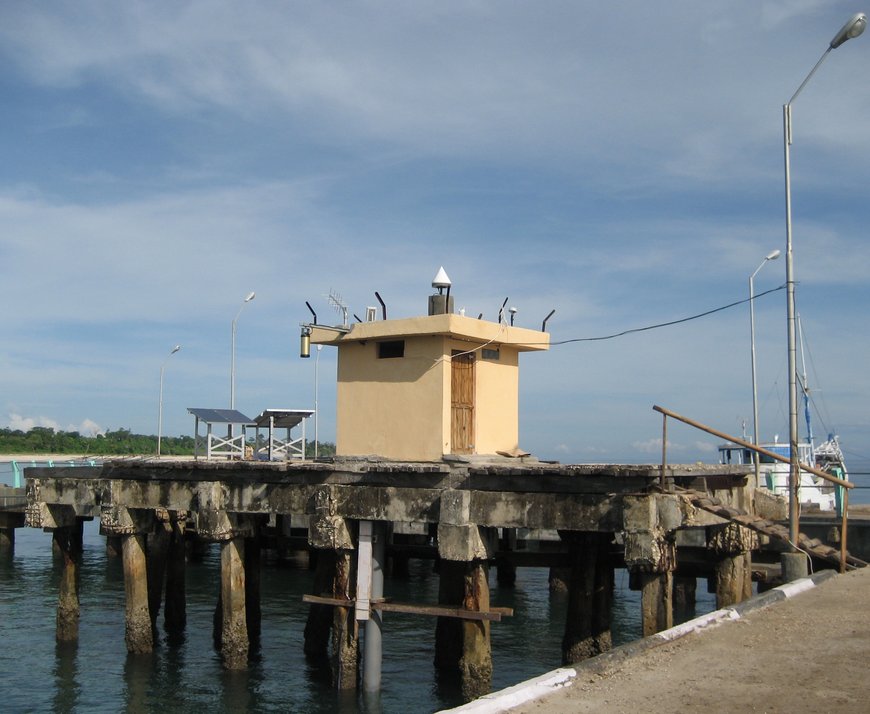GNSS-controlled Tide Gauges for Tsunami Warning and Sea Level research
Detection of tsunamis is requiring near real-time sea level measurements close to their source areas. Here, traditionally, tide gauges are the preferable source for information. Based on our experience in both sea level measurements with tide gauges and GNSS technology, our Section has installed a network of GNSS-controlled tide gauges around the Indian Ocean (GITEWS). In addition, several tide gauges without GNSS have been installed too.
The GNSS-controlled tide gauges are based on our ROMPS concept. Each station has different tide gauge sensors, a GNSS receiver, meteorological devices, and may have a seismometer connected. An embedded computer manages all attached hardware and provides the platform for data acquisition. Up to three different tide gauge sensors are collecting sea level data preferable every 20 seconds. An on-site algorithm is analyzing the incoming data stream for outliers and is estimating the excess between the actual measurement and a predicted tidal value. If the excess exceeds a threshold, the station is transmitting automatically all recently acquired data to a warning center. For tide gauges in Indonesia, a dedicated tsunami warning center (InaTEWS) can activate the station at any time. In addition, all sea level data is transmitted independently and parallel to IOC for international data exchange.
A meteorological compact sensor samples a range of values (e.g., air temperature, air pressure, wind speed, rain, or humidity) every minute. This data is used in short-term for correcting sea level data for inverse barometric effects, which may hamper the detection or falsification of sea level excesses. On the long-term these measurements can be used to study surge effects or long-term trends in sea level.
For the 2004 tsunami in Indonesia large parts of the islands in northern Sumatra have been vertically displaced during the earthquake, leading to a rapid change in the sea level readings. Therefore, all of our tide gauges in Indonesia have been equipped with GNSS to control the vertical as well as horizontal position. The GNSS data can be analyzed in case of a strong earthquake to define, whether a vertical displacement happened as well as for using the displacement to constrain the earthquake source parameters.
These, and the other GNSS-controlled tide gauges, serve additionally to the IGS TIGA Working Group and contribution to international projects and initiatives, like GGOS, GCOS or GLOSS.



